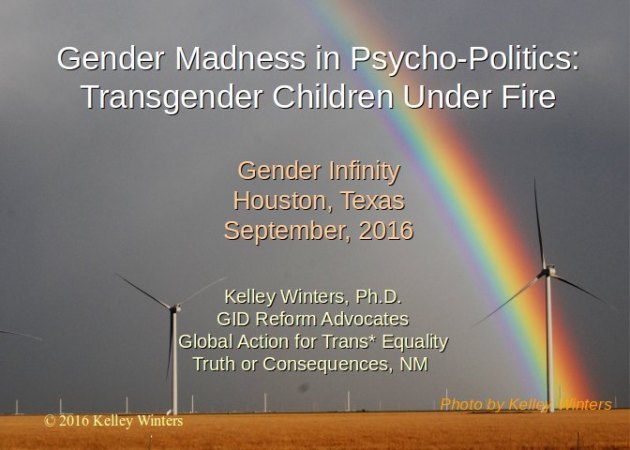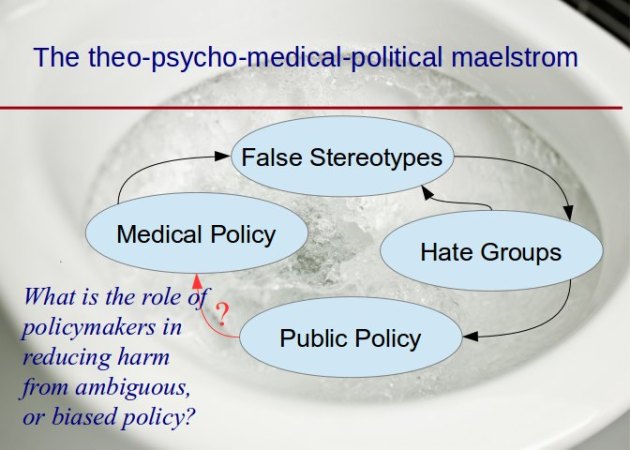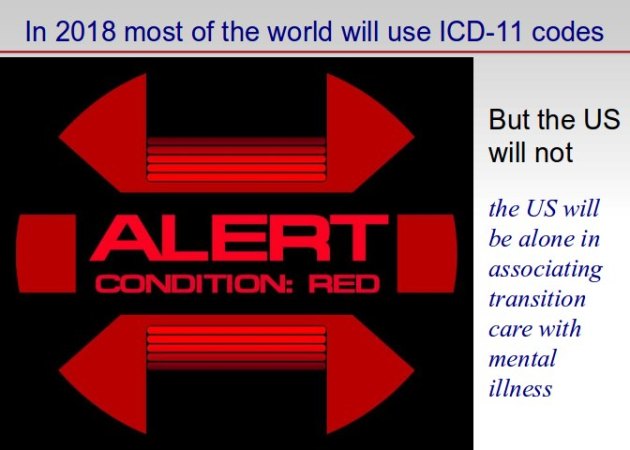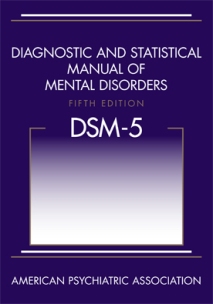Kelley Winters, Ph.D.
GID Reform Advocates
http://www.gidreform.org
kelley@gidreform.org
Last month, the American Psychiatric Association (APA) released a second round of proposed diagnostic criteria for the 5th Edition of The Diagnostic and Statistical Manual of Mental Disorders (DSM-5). These include two diagnostic categories that impact the trans communities, Gender Dysphoria (formerly Gender Identity Disorder, or GID) and Transvestic Disorder (Formerly Transvestic Fetishism). For decades, the GID diagnosis has drawn protest from trans and transsexual communities, their allies and supportive medical and mental health professionals for its depiction of gender diversity, gender transition and medical transition care as mental illness and sexual deviance. The current diagnostic criteria for GID in the DSM-IV-TR cast difference from stereotypes of birth-assigned gender roles as pathological and are biased to favor harmful gender-reparative psychotherapies that enforce birth-role conformity. However, many community advocates and supportive medical professionals agree that some kind of diagnostic coding is necessary to facilitate access to medical and/or surgical transition care for those trans and transsexual people who need it. There is a need to replace the GID category with diagnostic nomenclature that is consistent with transition care, for those who need it, rather than contradicting transition care. There is a need for diagnostic nomenclature that does not harm those it is intended to help.
I urge trans community members, friends, care providers and allies to call upon the APA to clarify in the DSM-5 that nonconformity to birth-assigned roles and being victims of societal prejudice are not, in themselves, mental pathology. The current period for public comment to the APA ends June 15.
The APA Proposal Falls Short
The Sexual and Gender Identity Disorders Workgroup of the DSM-5 Task Force has partially responded to concerns about the GID diagnosis. For example, the derogatory title of Gender Identity Disorder (intended to imply, “disordered” gender identity) has been replaced with Gender Dysphoria, from a Greek root for distress. DSM-5 authors have expressed an willingness to focus on distress with incongruent physical characteristics and assigned gender roles, rather than on diagnosing difference (Ophelian 2010).
Moreover, the workgroup has articulated a historic shift in diagnostic focus away from the stereotype of “disordered” gender identity:
We have proposed a change in conceptualization of the defining features by emphasizing the phenomenon of “gender incongruence” in contrast to cross-gender identification per se (APA 2011A)
However, the workgroup has not reflected these principles in the diagnostic criteria for Gender Dysphoria. They retain much of the flawed language from the DSM-IV, casting difference from birth-assigned roles and a desire for medical transition treatment, in themselves, as symptomatic of mental disorder. Worse yet, post-transition people who are happy with their bodies and affirmed roles remain entrapped by the diagnostic criteria and specifiers, permanently labeled as mentally and sexually disordered. The proposed diagnostic criteria and categorical placement in the DSM continue to contradict transition and describe transition itself as pathological.
Social Stigma.
The proposed Gender Dysphoria diagnosis describe identities and expressions that differ from assigned birth sex as mental illness and sexual deviance. Behaviors and emotions considered ordinary or even exemplary for other (cisgender) people are mis-characterized as madness for gender variant people and especially children. For example,
in boys, a strong preference for cross-dressing or simulating female attire; in girls, a strong preference for wearing only typical masculine clothing and a strong resistance to the wearing of typical feminine clothing (APA 2011B)
In fact, five of the proposed subcriteria for children are strictly based on gender role nonconformity, with no relevance to the definition of mental disorder. As a consequence of similar criteria in the current DSM-IV-TR, children are punished and shamed for nonconformity to assigned birth roles.
Additionally, the Gender Dysphoria diagnosis is categorized with sexual disorders in the DSM. Although the work group noted that, “gender diagnoses will be separated from the sexual dysfunctions and paraphilias,” (APA 2011B). this decision falls short of addressing concerns about harmful stigma raised by clinicians, community advocates, and the World Professional Association for Transgender Health (2010A). Transwomen (those who identify as women and were birth-assigned male) are often maligned as crazy and sexually suspect “men” by the stigma of mental illness and sexual deviance that is perpetuated by these criteria and placement with sexual disorders, and vice versa for transmen. Gender variant and especially transsexual people lose jobs, homes, families, access to public facilities, and even custody and visitation of children as consequences of these false stereotypes.
Medical Transition Care Access.
The proposed Gender Dysphoria criteria continue to pose barriers for access to medically necessary hormonal and surgical transition treatment for those who need them. They contradict social and medical transition and mis-characterize transition itself as symptomatic of mental disorder. For example, four of six adult subcriteria describe a “strong desire” for social or medical transition as symptomatic of mental disorder (APA 2011A), without describing underlying distress or deprivation of life function that might underlie a desire for corrective treatment. This would be akin to classifying a desire for cancer treatment as pathological, rather than the cancer itself.
Transitioned individuals who are highly functional and happy with their lives are forever diagnosable as mentally disordered, according to the proposed criteria. For example, a post-transition person who wants to continue living in her or his affirmed role, wants to be treated like others of her/his affirmed gender, has typical feelings of those in her/his affirmed gender, and is distressed or unemployed because of societal prejudice will forever meet criteria A (subcriteria 4, 5 and 6) and B and remain diagnosable as mentally ill, regardless of how successfully her or his gender dysphoria has been ameliorated.
A new Post-transition specifier has been added to the proposed Gender Dysphoria criteria, which describes all individuals who have transitioned their gender roles full-time and have received hormonal and/or surgical transition care (APA 2011A). While this specifier is intended to aid continued access to hormonal care for post-transition people whose medical records do not yet reflect their affirmed gender, it is so broadly worded that it once again blocks exit from the diagnosis for everyone who has completed a social and medical transition. As written, this specifier contradicts transition treatment and describes social and medical transition in themselves as perpetually symptomatic of mental illness.
Like a roach motel, the proposed criteria and specifiers leave no way for a well adjusted transitioned person to exit diagnosis. As a consequence of diagnostic criteria that contradict proven treatments, the medical necessity of hormonal and surgical transition treatment is commonly denied by care providers, insurers and government agencies. In the US, access to surgical transition care is most often limited to the most financially privileged.
Punitive Gender-Reparative Therapies.
The American Psychiatric Association has often repeated that the DSM is a diagnostic manual and not a treatment guide (APA 2008). In truth, however, treatment and diagnostic nomenclature are inevitably intertwined. The efficacy of all medical and psychological treatments are judged by how well they ameliorate symptoms defined by diagnostic criteria (Winters 2008). Therefore, the wording of diagnostic criteria can have an enormous impact on treatments chosen by clinicians.
The proposed diagnostic criteria for Gender Dysphoria, like those of their GID predecessors, clench post-transition individuals who are happy and well adjusted with their bodies and affirmed roles even more tightly than they apply to pre-transition individuals suffering distress. Exit from diagnosis only exists for those transpeople who have beenshamed back into the closets of their birth-assigned roles. Thus, the current GID and proposed GD criteria implicitly promote punitive gender-reparative “treatments” intended to enforce conformity to assigned birth sex and suppress gender variant identities and expressions.
Criterion, B, which clarifies that distress or impairment should meet a clinical threshold for diagnosis, was recently reinstated by the APA in response to clinician concerns that distress should be emphasized over difference. However, the proposed language fails to exclude consequences of societal prejudice as a basis for diagnosis of mental disorder. As written, criterion B may be misinterpreted to imply that youth and adults who are victims of prejudice and exclusion are impaired and therefore mentally ill, simply because they are victims. Dr. Kenneth Zucker, co-author of the current GID diagnosis and Chairman of the DSM-5 Sexual and Gender Identity Disorders Workgroup, has used this interpretation of victimhood-as-pathology to promote gender-reparative psychotherapies for gender variant youth:
the standard of impairment in children with GID has been their poor same-sex peer relations, with attendant social ostracism.(Zucker 1999)
Zucker’s approach to gender-reparative “treatment” of a youth he diagnosed with GID was described in a chilling National Public Radio Interview in 2008:
Bradley would no longer be allowed to spend time with girls. He would no longer be allowed to play with girlish toys or pretend that he was a female character. Zucker said that all of these activities were dangerous to a kid with gender identity disorder. (Speigel 2008)
Why Not Remove All Gender Diagnosis?
Since the 1990s, some community advocates have called for the elimination of all gender-related diagnostic nomenclature in the DSM, in response to issues of stigma of mental disorder and sexual deviance. (Wilchins 1996; Park 2011) However, there is broad recognition among many community advocates and supportive medical professionals that some kind of diagnostic coding is necessary to facilitate access to medical and/or surgical transition care for those trans and transsexual people who need it. The World Professional Association for Transgender Health has stated that,
The use of a formal diagnosis is often important in offering relief, providing health insurance coverage, and guiding research to provide more effective future treatments (WPATH 2001)
Others have suggested that physical, medical, diagnostic nomenclature in the International Classification of Diseases (ICD) is more appropriate than diagnosis of mental disorder (NGLTF 1996; Lev 2004; Allison 2009). However, such consensus within pediatric and endocrine medical specialties will not happen before publication of the DSM-5 in 2013. Because major revisions of the DSM are very infrequent, the DSM-5 will likely impact the lives, civil liberties and medical care of gender variant people through the 2020s. There is a fleeting opportunity to advocate reform, or harm reduction, of the GID category and removal of the defamatory Transvestic Fetishism category in the DSM-5 now. The objective of GID reform is to advance forward progress on both issues of social stigma and better access to medical transition care, for those who need it, and not one at the expense of the other, or to the benefit part of the transcommunity by harming another.
A New Distress-based Diagnostic Paradigm.
An international group of mental health and medical clinicians, researchers and scholars, Professionals Concerned With Gender Diagnoses in the DSM, has proposed alternative diagnostic nomenclature based on distress rather than nonconformity (Lev, et al., 2010; Winters and Ehrbar 2010; Ehrbar, Winters and Gorton 2009). These include anatomic dysphoria (painful distress with current physical sex characteristics) as well as social role dysphoria (distress with ascribed or enforced social gender roles that are incongruent with one’s inner experienced gender identity) For children and adolescents, these alternative criteria include distress with anticipated physical sex characteristics that would result if the youth were forced to endure pubertal development associated with natal sex. For those who require a post-transition diagnostic coding for continued access to hormonal therapy, the criteria include sex hormone status. Based on prior work by psychologist Anne Vitale (2010), this distress may also be described as deprivation of physical characteristics or social gender expression that are congruent with inner experienced gender identity. The resulting four-cornered definition of gender dysphoria, encompassing direct distress and deprivation distress around anatomic sex and ascribed/assigned gender, provides a cogent definition of the problem to be treated with medical transition care. It addresses prior false-positive and false-negative diagnostic concerns and does not contradict the treatment.
These alternative criteria acknowledge that experienced gender identity may include elements of masculinity, femininity, both or neither and are not limited to binary Western stereotypes. They also define clinically significant distress and impairment to include barriers to functioning in one’s experienced congruent gender role and exclude victimization by social prejudice and discrimination.
Suggested Diagnostic Criteria for Gender Dysphoria in the DSM-5
I would like to suggest that the APA adopt new diagnostic criteria for the Gender Dysphoria categories for children and adults/adolescents that are based on the following summary of work from the Concerned Professionals group–
A. A distressing sense of incongruence between persistent experienced or expressed gender and current physical sex characteristics or ascribed gender role in adults, adolescents (who have reached the earlier of age 13 or Tanner Stage II of pubertal development), or assigned gender role in children, manifested by at least one of the following indicators for a duration of at least 3 months. Incongruence, for this purpose, does not mean gender expression that is nonconforming to social stereotypes of assigned gender role or natal sex.
1. A distress or discomfort with living in the present gender or being perceived by others as the present gender, which is distinct from the experiences of discrimination or the societal expectations associated with that gender.
2. A distress or discomfort caused by deprivation of gender expression congruent with persistent experienced gender (or, for children, insistence that one has a gender that differs from the present gender). Experienced gender may include alternative gender identities beyond binary stereotypes.
3. A distress or discomfort with one’s current primary or secondary sex characteristics, including sex hormone status, that are incongruent with persistent experienced gender, or with anticipated pubertal development associated with natal sex.
4. A distress or discomfort caused by deprivation of primary or secondary sex characteristics, including sex hormone status, that are congruent with persistent experienced gender (including post-pubertal characteristics congruent with experienced gender, in the case of children and pre-adolescents).
B. Distress or discomfort is clinically significant or represents impairment in major life functions in a role congruent with experienced gender identity. Distress or impairment due to external prejudice or discrimination is not a basis for diagnosis.
Regardless of the wording chosen for the DSM-5, these alternative criteria for Gender Dysphoria may be used in clinical practice today to inform treatment by clarifying the problem that is being treated. These alternative criteria may serve to facilitate clearer communication between primary care, medical specialty and mental health providers, and they can enable patients and families of transitioning youth to make more informed decisions on treatment options.
What You Can Do Now
- Ask the APA to reject diagnostic criteria and categorical placement for the Gender Dysphoria diagnosis that contradict transition or depict transition as symptomatic of mental disorder. Ask them to clarify that nonconformity to birth-assigned roles and being victims of societal prejudice are not, in themselves, mental pathology. Go to the APA DSM-5 web site (APA 2011), click on “register now,” create a user account and enter your statement in the box. The deadline for this second period of public comment is June 15.
- Ask your local, national and international GLBTQ nonprofit organizations to issue public statements to clarify that nonconformity to birth-assigned roles and being victims of societal prejudice are not, in themselves, mental pathology.
- Ask mental health and medical professionals who work with the transcommunity to voice their concerns to the APA.
- Spread the word to your network of friends and allies.
For more information, see GID Reform Advocates (Winters, 2010)
APA: Proposed Diagnostic Criteria for Gender Dysphoria (in Adolescents or Adults)
(APA 2011A)
A. A marked incongruence between one’s experienced/expressed gender and assigned gender, of at least 6 months duration, as manifested by 2 or more of the following indicators: [2, 3, 4]
1. a marked incongruence between one’s experienced/expressed gender and primary and/or secondary sex characteristics (or, in young adolescents, the anticipated secondary sex characteristics) [13, 16]
2. a strong desire to be rid of one’s primary and/or secondary sex characteristics because of a marked incongruence with one’s experienced/expressed gender (or, in young adolescents, a desire to prevent the development of the anticipated secondary sex characteristics) [17]
3. a strong desire for the primary and/or secondary sex characteristics of the other gender
4. a strong desire to be of the other gender (or some alternative gender different from one’s assigned gender)
5. a strong desire to be treated as the other gender (or some alternative gender different from one’s assigned gender)
6. a strong conviction that one has the typical feelings and reactions of the other gender (or some alternative gender different from one’s assigned gender)
B. The condition is associated with clinically significant distress or impairment in social, occupational, or other important areas of functioning, or with a significantly increased risk of suffering, such as distress or disability
Subtypes
With a disorder of sex development [14]
Without a disorder of sex development
See also: [15, 16, 19]
Specifier
Post-transition, i.e., the individual has transitioned to full-time living in the desired gender (with or without legalization of gender change) and has undergone (or is undergoing) at least one cross-sex medical procedure or treatment regimen, namely, regular cross-sex hormone treatment or gender reassignment surgery confirming the desired gender (e.g., penectomy, vaginoplasty in a natal male, mastectomy, phalloplasty in a natal female).
Note: Three changes have been made since the initial website launch in February 2010: the name of the diagnosis, the addition of the B criterion, and the addition of a specifier. Definitions and criterion under A remain unchanged.
APA: Proposed Diagnostic Criteria for Gender Dysphoria in Children
(APA 2011B)
A. A marked incongruence between one’s experienced/expressed gender and assigned gender, of at least 6 months duration, as manifested by at least 6* of the following indicators (including A1): [2, 3, 4]
1. a strong desire to be of the other gender or an insistence that he or she is the other gender (or some alternative gender different from one’s assigned gender) [5]
2. in boys, a strong preference for cross-dressing or simulating female attire; in girls, a strong
preference for wearing only typical masculine clothing and a strong resistance to the wearing of typical feminine clothing [6]
3. a strong preference for cross-gender roles in make-believe or fantasy play [7]
4. a strong preference for the toys, games, or activities typical of the other gender [8]
5. a strong preference for playmates of the other gender [9]
6. in boys, a strong rejection of typically masculine toys, games, and activities and a strong avoidance of rough-and-tumble play; in girls, a strong rejection of typically feminine toys, games, and activities [10]
7. a strong dislike of one’s sexual anatomy [11]
- a strong desire for the primary and/or secondary sex characteristics that match one’s experienced gender [12]
B. The condition is associated with clinically significant distress or impairment in social, occupational, or other important areas of functioning, or with a significantly increased risk of suffering, such as distress or disability.
Subtypes
With a disorder of sex development [14]
Without a disorder of sex development]
See also [13, 15, 19]
Note: Two changes have been made since the initial website launch in February 2010: the name of the diagnosis and the addition of the B criterion. Definitions and criteria under A remain unchanged.
References
Allison, R. (2009) “Aligning Bodies with Minds: The Case for Medical and Surgical Treatment of Gender Dysphoria,” Annual Meeting of the American Psychiatric Association San Francisco, May 18, http://www.gidreform.org/blog2009May27.html
American Psychiatric Association (2011) “DSM-5 Development; Proposed Revisions, 302.3 Transvestic Fetishism,” http://www.dsm5.org/ProposedRevision/Pages/proposedrevision.aspx?rid=189#
American Psychiatric Association (2011A) “DSM-5 Development; Proposed Revisions, P 01 Gender Dysphoria in Adolescents or Adults,” http://www.dsm5.org/ProposedRevision/Pages/proposedrevision.aspx?rid=482
American Psychiatric Association (2011B) “DSM-5 Development; Proposed Revisions, P 00 Gender Dysphoria in Children,” http://www.dsm5.org/ProposedRevision/Pages/proposedrevision.aspx?rid=192
American Psychiatric Association (2008), “APA STATEMENT ON GID AND THE DSM-V,” http://www.psych.org/MainMenu/Research/DSMIV/DSMV/ APAStatements/APAStatementonGIDandTheDSMV.aspx , May 23
Ehrbar, R., Winters, K., Gorton, N. (2009) “Revision Suggestions for Gender Related Diagnoses in the DSM and ICD,” The World Professional Association for Transgender Health (WPATH) 2009 XXI Biennial Symposium, Oslo, Norway, http://www.gidreform.org/wpath2009/
Gigs, L. and Carroll, R. (2010) “Should Transvestic Fetishism Be Classified in DSM 5? Recommendations from the WPATH Consensus Process for Revision of the Diagnosis of Transvestic Fetishism,” International Journal of Transgenderism, 12:189-197.
Lev, A.I. (2004). Transgender emergence: Therapeutic guidelines for working with gender-variant people and their families. NY: Routledge, p. 180.
Lev, A.I., Winters, K., Alie, L., Ansara, Y., Deutsch, M., Dickey, L., Ehrbar, R., Ehrensaft, D., Green, J., Meier, S., Richmond, K., Samons, S., Susset, F., (2010). “Response to Proposed DSM-5 Diagnostic Criteria. Professionals Concerned With Gender Diagnoses in the DSM.” Retrieved December 4, 2010 from: http://professionals.gidreform.org
National Gay and Lesbian Task Force (1996), “Statement on Gender Identify Disorder and transgender people by the National Gay and Lesbian Task Force (NGLTF),” http://www.gendertalk.com/articles/archive/ngltf1.htm
TransYouth Family Allies (2010) “Comments on the Proposed Revision to 302.6 Gender Identity Disorder in Children, Submitted to the American Psychiatric Association,” April 20, http://www.imatyfa.org/whatsnew/2010/10apr-commentsondsm-v.html
Vitale, A. (2010) The Gendered Self: Further Commentary on the Transsexual Phenomenon, Lulu, http://http://www.avitale.com/
Winters, K. (2008). Gender Madness in American Psychiatry: Essays from the struggle for Dignity, GID Reform Advocates, http://www.gendermadness.com
Winters, K. (2010) “Ten Reasons Why the Transvestic Disorder Diagnosis in the DSM-5 Has Got to Go,” GID Reform Advocates, Oct. 15, http://www.gidreform.org/blog2010Oct15.html
Winters, K. and Ehrbar, R. (2010) “Beyond Conundrum: Strategies for Diagnostic Harm Reduction,” Journal of Gay & Lesbian Mental Health, 14:2, 130-139, April
Ophelian, A (2010) Diagnosing Difference, documentary film, http://www.diagnosingdifference.com/
Park. P. (2011) “Transgender Health, Pathology & Human Rights,” Harvard University School of Public Health, April, http://www.paulinepark.com/index.php/2011/04/transgender-health-human-rights-harvard-4-20-11/
Speigel, A. (2008) “Two Families Grapple with Sons’ Gender Preferences,” National Public Radio, All Things Considered,”http://www.npr.org/templates/story/story.php?storyId=90247842
Wilchins, R. (1996). “TG Activisits Protest APA, Call for End to Gender Identity Disorder,” Transgender Forum, May, http://www.tgforum.com/
World Professional Association for Transgender Health (2001)“Standards of Care for Gender Identity Disorders,” Sixth Version,http://wpath.org/Documents2/socv6.pdf
World Professional Association for Transgender Health (2010). “Statement Urging the De-psychopathologisation of Gender Variance,” May 26, http://wpath.org/publications_public_policy.cfm
World Professional Association for Transgender Health (2010A). “WPATH Reaction to DSM-V Criteria for Gender Incongruence,” May 25 ,http://www.wpath.org/documents/WPATH%20Reaction%20to%20the%20proposed%20DSM%20-%20Final.pd
Zucker, K. (1999) “Commentary on Richardson’s (1996) ‘Setting Limits on Gender Health,’” Harvard Rev Psychiatry, vol 7, p. 41.
Copyright © 2011 Kelley Winters, GID Reform Advocates







